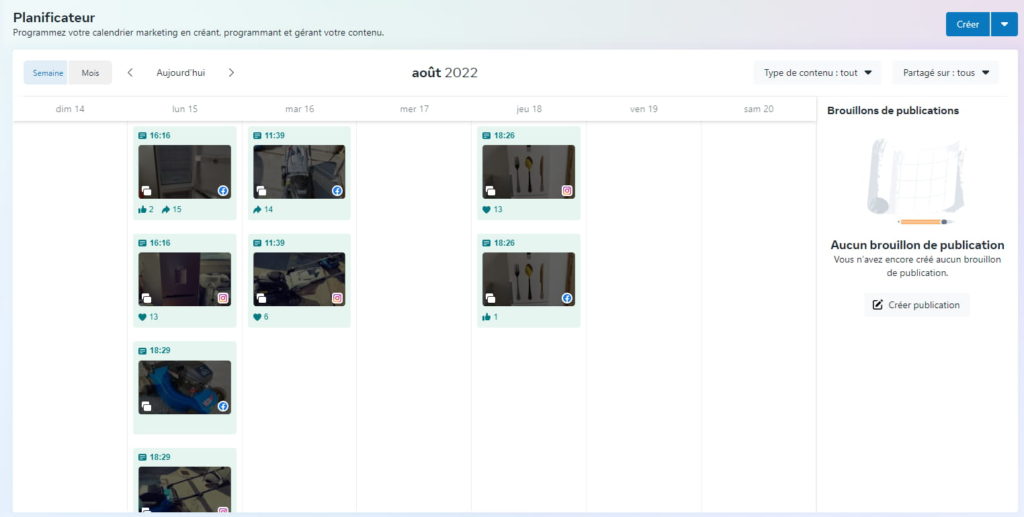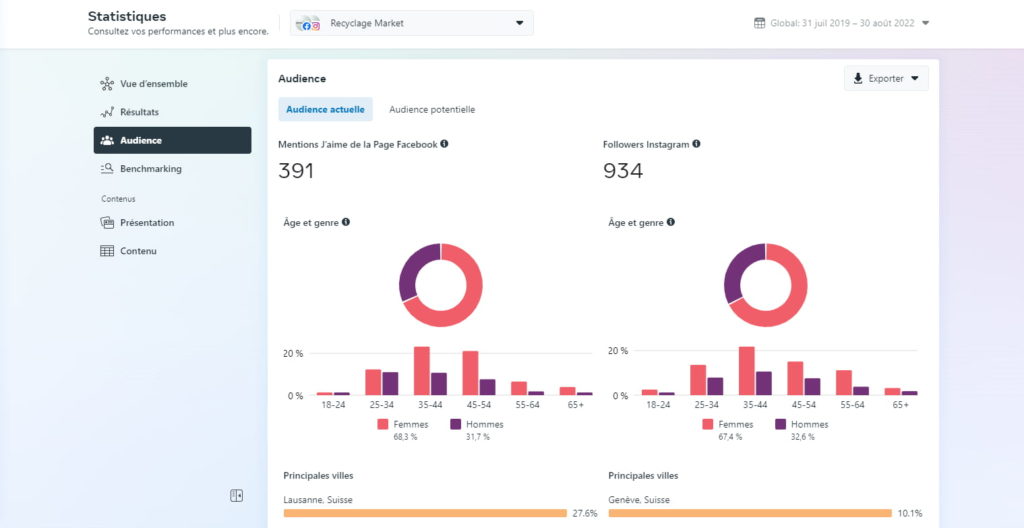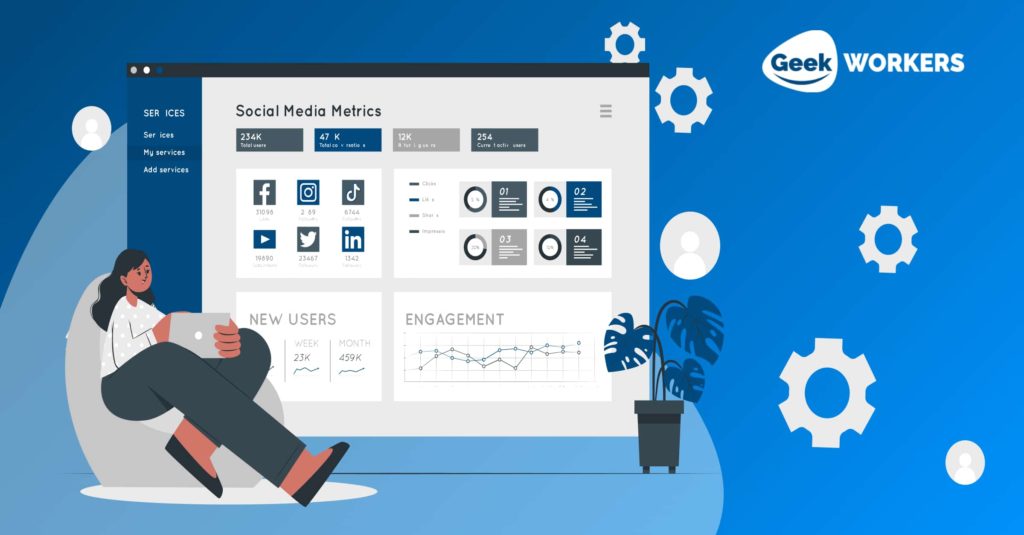Inasmuch as Community Manager, what can you do to help your business succeed?
Build strong relationships with your customers to strengthen their loyalty with your brand and most importantly to help your business retain more customers over the long term. A strong community becomes a place where customers not only interact with your brand, but also with each other. This is free word of mouth advertising and a great source of positive reviews.
But a social media community doesn't happen overnight. It takes time and work to create one. As a Community Manager, you'll need to put a plan in place, track the right metrics, and get feedback to get things done.
Luckily, we're here to help with these tips and tricks on social media community management best practices.
1. Plan, Plan, Plan…
Consistency is essential in your community management strategy on social networks. Plan so you have reliable content at all times, and you can clearly see what needs to be accomplished.
Consistency will help you keep your posts relevant in your audience's newsfeeds and maintain a healthy online presence to hold their attention.
Planning is essential to your success as a Community Manager. All of your content, whether it's the posts you schedule, ongoing campaigns, contests, etc., should be organized into a content calendar detailed so that you can have a clear and global vision of your work.
You'll also want to do everything in your power to avoid posting errors, so you'll need to define roles and approval flows for your team. The content you stream needs to be checked and double-checked, and only key team members can post it.

2. Work on your communication skills
As a Community Manager, you will be in contact with customers, which involves high pressure. There are many ways things can go wrong, and many of them are not your fault. Either way, it's important that you are able to stay calm under pressure and stay professional.
It's important to remember that every time you post, retweet, or reply to a comment, you're not only representing yourself, but also your business in a public space.
Therefore, as a Community Manager, you will need to be able to handle this pressure to remain diplomatic and customer-oriented in your communications.
A great way to prevent crises is to monitor conversations around your brand and related topics. This social media listening will let you know there might be a problem and help you monitor sentiment around your brand so nothing catches you by surprise.
3. Cultivate brand personality
Maybe you need to stay professional and not insult your audience. But it's also important that your brand has a consistent and recognizable identity in its interaction with the community.
This makes your audience feel like they are speaking to a person and will go a long way in building engagement and brand loyalty.
Some of the best examples of community management on social media are brands that have made a real effort to develop an interesting and unique persona.
4. Define success and set KPIs for monitoring
Tracking the success of managing social media communities can be tricky. Traditionally, return on investment is often measured by clicks and conversions, but your social media results won't be as clear. It can be difficult to determine how your efforts directly contributed to sales and leads.
Instead, it's best to figure out how you define your own success, based on your goals. Track what kind of content your audience is engaging with, what's talking about it or falling flat, and what's bringing you more subscribers.

Since a large part of the community management job will be to act as a point of contact for customer questions and product related issues, response time, resolution time and customer satisfaction is another set of measures to follow.
Tracking these metrics will help you, as a Community Manager, determine your team's performance and clearly see what you can improve to better meet your customers' needs.
5. Engage your audience in the conversation
Social networks are synonymous with interaction. So, if you want to create and publish the best content possible, sometimes even better content comes from another source: YOUR AUDIENCE.
This is User Generated Content, or UGC. It is powerful because of its authenticity and reflects what your audience thinks of your brand. It also allows your audience to share their experiences, positive or negative, and moves the conversation forward in ways you can't just push content into the space.
It's also a great way for you to connect with your audience, giving your brand a more personal and approachable feel.
User-generated content can take the form of small things, like posts or tweets mentioning your brand, user comments, but also campaigns and collaborator blogs.
6. Collect and use data
As a Community Manager, you are in closer contact than anyone with your audiences.
You see daily how they react to your content, which generatescommitment and what does not. And what are the problems and questions they arise, all in real time.
This skill set makes you an invaluable source of information about your company's customers and prospects.
A good Community Manager stays abreast of the challenges and opportunities facing their brand in order to constantly improve its performance, but your value goes far beyond improving your own performance.
Through your close contact with your audience, you will have information that others will not have access to. Don't let all that data go to waste. Collect actionable information and share it with other services.
A good way to do this is to label incoming queries and group them according to topics or issues that customers bring to your attention. This will help you identify their pain points and pain points, and allow you to improve how your brand meets their needs.
The value of this data cannot be underestimated. You'll end up with happier and more loyal customers, as well as more easily convertible leads.
7. Be flexible with your time
Fortunately or unfortunately, the work of a social media manager is not limited to the strict office hours of 9 am to 5 pm.
It can be a double-edged sword. On the one hand, this gives you some flexibility in your working hours, but on the other hand, it means that it is very easy to feel like you are constantly on call.
Social media never stops and you may feel like you always have to be on the lookout to spot a problem right away. After all, it has happened in the past that social media-related crises spiral out of control because the offending party was not online to mitigate the disaster.
On the bright side, if you follow tip #1 and stay organized with plenty of content scheduled and ready to go, you can structure your time any way you want.
But there's another way to earn free time, even if you maintain a consistent online presence. Technology !
8. Be comfortable with technology
How are you supposed to keep tabs on your social media every day of the week without staring at your computer at all hours? The answer is two-fold, but simple: embrace mobility and provide yourself and your team with the tools you need to save time.
The job of a Community Manager is not an ordinary office job. Instead of a routine 9 a.m. to 5 p.m. schedule, you'll need to be there posting Instagram Stories on the fly, writing news flashes on the fly, whether you're in the office or on the go.
Keep up with that pace by embracing mobile. You will be able to manage interactions on the fly and avoid accumulating a backlog of work that distracts you from your other responsibilities.
But managing your social media community platform by platform can be overwhelming, even on mobile. Being at the cutting edge of technology doesn't mean juggling multiple applications, in fact, it's quite the opposite: Simplify! Go beyond native tools.
Give your team a tool like Hootsuite which will allow you to consolidate all your disparate social media data into one platform.
To remember
The role of a Community Manager can seem daunting, but the key points to remember are:
- Get organized with the tools you and your team really need, with defined metrics and a solid content calendar.
- Cultivate a brand personality to nurture your community. Engage them in user-generated content.
- Gather the vast amount of granular data available to you as a social media community manager and put it to use. Your team and your community will thank you for your insight!
At Geekworkers, we offer the management of all your social networks for the purpose of promoting your services or products, developing your brand image and communicating with your community and attracting new customers.
